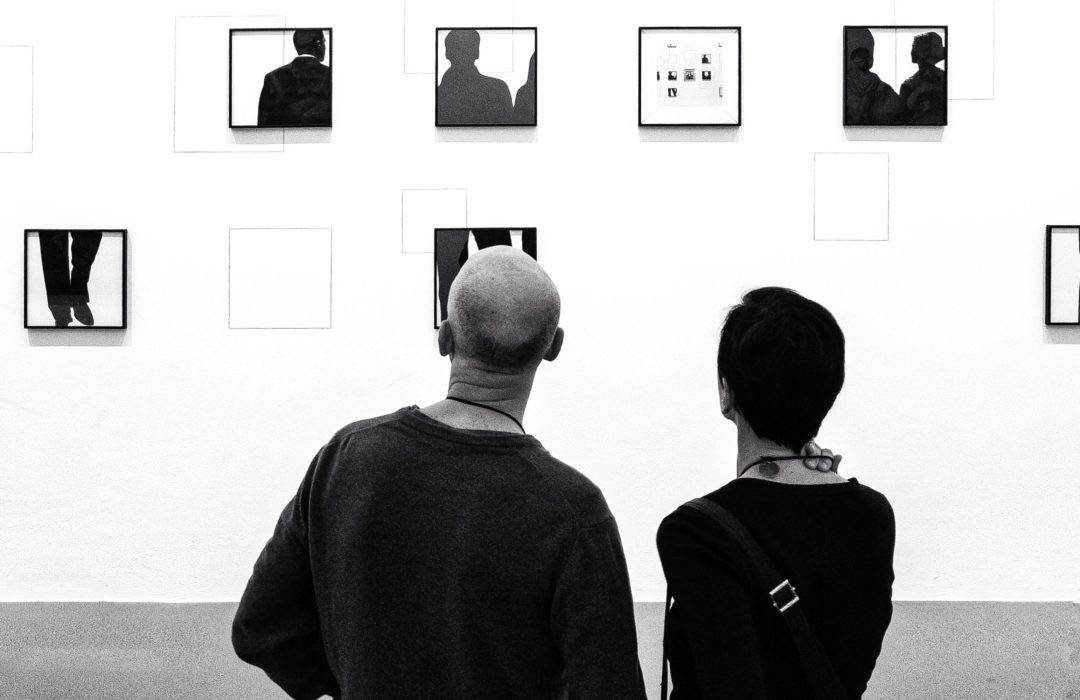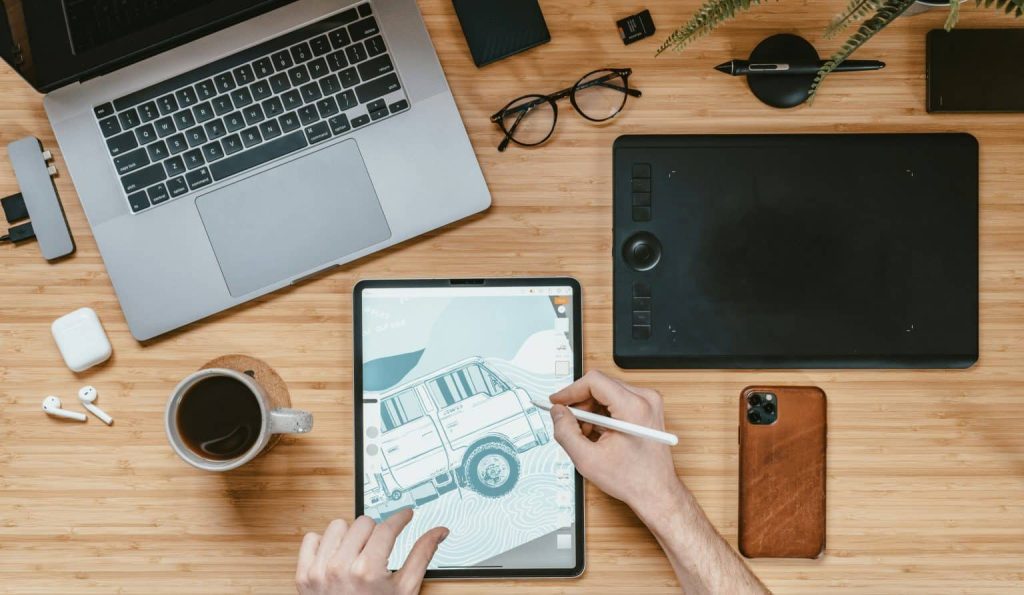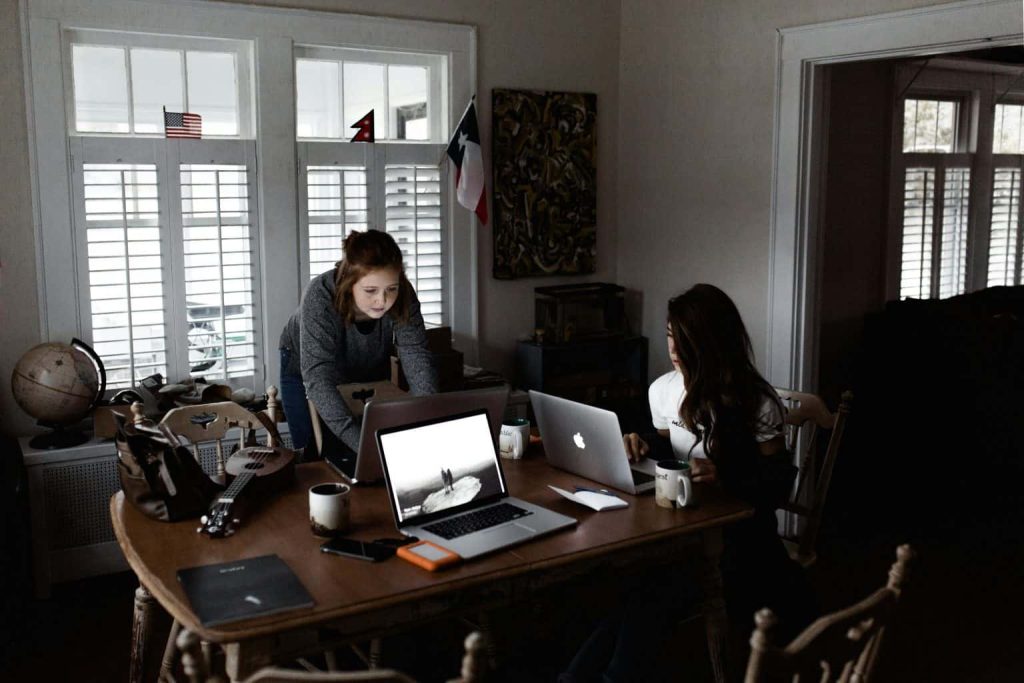
01 Feb Promoting Contemporary Art in the Digital Age
The digital age has ushered in transformative changes, requiring artists to navigate a landscape that blurs the lines between creativity and digital entrepreneurship. With the rapid evolution of technology, artists find themselves at the intersection of traditional artistic expression and the digital realm. Effectively showcasing their work has become paramount in this globalized online landscape, where artists leverage various platforms, social media networks, and digital tools to connect with a diverse audience. However, the democratization of access brings challenges as artists strive to stand out amidst the digital noise and capture the attention of an increasingly discerning audience. In this complex and interconnected environment, artists not only create art but also curate their online personas, strategically using digital mediums to narrate the stories behind their work. The fusion of contemporary art and technology fosters collaboration, experimentation, and innovation, expanding the boundaries of artistic expression. This era demands a holistic approach that combines artistic prowess with digital acumen, as artists embark on a journey to create compelling works and effectively share them in a world that is continually evolving.
Understanding the Digital Landscape for Contemporary Art Promotions

Photo by Martino Pietropoli
Social Media as a Formidable Ally
Social media serves as a powerful ally in the artist’s pursuit of exposure and recognition. Platforms like Instagram, X formerly known as Twitter, and TikTok function as virtual canvases, enabling artists to instantly share their work with a global audience. The interactive nature of these platforms allows artists to engage with followers, receive valuable feedback, and foster collaborations with fellow creatives. By strategically employing hashtags, sharing behind-the-scenes glimpses, and capitalizing on trends, artists can carefully craft a digital persona that resonates with diverse audiences, thereby enhancing their online presence.
Online Galleries: Essential Spaces for Showcasing
Online galleries have emerged as indispensable spaces for showcasing digital art in a curated and accessible format. These platforms provide artists with a virtual stage, breaking down geographical barriers and democratizing the art-viewing experience. As audiences increasingly turn to the internet for art discovery, online galleries act as dynamic hubs that connect artists with art enthusiasts, facilitating a seamless and global exchange of creativity.
Virtual Exhibitions: Pushing the Boundaries of Creativity
Virtual exhibitions have become a groundbreaking avenue for artists to explore and expand the boundaries of their creativity. Leveraging technologies like virtual reality (VR) and augmented reality (AR), artists can transport audiences into interactive and multisensory digital realms. This shift from traditional physical exhibitions to virtual spaces not only broadens the horizons of artistic expression but also ensures that art becomes more inclusive and accessible to a global audience, transcending the limitations of physical locations.
NFTs: Revolutionizing Digital Ownership
The introduction of non-fungible tokens (NFTs) has revolutionized the digital art market. NFTs, powered by blockchain technology, allow artists to authenticate and tokenize their digital creations, establishing a unique and verifiable ownership record. This innovation not only opens up new revenue streams for artists but also challenges traditional notions of ownership and provenance within the art world, paving the way for a more decentralized and transparent ecosystem.
Augmented Reality: Transforming Art Engagement
Augmented reality (AR) represents another transformative technology to showcase contemporary art that is reshaping the way audiences engage with art. By blending the virtual and physical worlds, artists can use AR to overlay digital artworks onto physical spaces, turning ordinary environments into interactive and dynamic showcases. This not only enhances viewer engagement but also introduces new possibilities for public art installations and unconventional exhibition formats, further blurring the lines between the digital and physical realms of artistic expression.
Strategies and Tips for Artists

Photo by Cristofer Maximilian
Building an Online Presence
Artists might start building a strong internet presence by developing a portfolio or official website. This online area functions as a virtual gallery, giving creators authority over their story and facilitating simple access to an extensive collection of work. It’s critical to interact with users on social media sites like Instagram and TikTok. Providing behind-the-scenes material and insights into the creative process fosters a relationship with fans. Engaging in online networks and art forums also helps to create relationships within the artistic community, which increases visibility.
Utilizing Digital Marketing Tools
To maximize visibility, artists can leverage targeted advertising on platforms such as Facebook and Instagram. Defining a specific audience ensures the efficacy of promotional efforts. Collaborating with influencers and online publications in the art niche expands reach, as their endorsement introduces the artist’s work to a broader audience. Implementation of SEO strategies further enhances online visibility. Optimizing meta descriptions, titles, and image alt text contributes to increased organic traffic.
Embracing Creative Online Exhibitions
Participation in virtual art galleries and online exhibitions offers exposure to a global audience without geographical limitations. Artists can experiment with innovative formats, such as live-streamed studio tours and interactive digital presentations. Integration of virtual and augmented reality creates immersive art experiences. Embracing technological advancements, artists can also explore NFTs and blockchain technology for secure art ownership.
Building Relationships and Community
Building relationships and fostering a sense of community are essential components of online success for artists. Engaging in collaborative initiatives and discussions with fellow artists helps attract a broader audience. Hosting online workshops and educational sessions not only interacts with the audience but also establishes the artist as an authority in their field. Actively connecting with collectors and gallerists on online platforms opens doors to various opportunities within the art world.
Utilizing Emerging Technologies
Artists are encouraged to explore the potential of NFTs and blockchain for transparent and secure art ownership. Familiarity with the evolving intricacies of this space is crucial. Experimenting with interactive digital art installations and augmented reality experiences keeps artists at the forefront of technological trends, providing new avenues for artistic expression. Continuous adaptation to emerging technologies is emphasized, urging artists to stay informed and evolve their approach in the ever-changing digital landscape.

Photo by Andrew Neel
Conclusion
Artists in the digital era have the dual challenges of producing visually striking works and judiciously marketing them in a multinational internet marketplace. Because artists integrate their creativity into the fabric of digital enterprise by utilizing a variety of platforms and cutting-edge technology, this calls for an all-encompassing strategy. Key strategies involve building a robust online presence through professional websites, social media engagement, and participation in online communities. Artists must also embrace innovative formats such as virtual exhibitions and integrate technologies like NFTs to stay relevant. Building relationships within the artistic community and engaging with collectors further amplify an artist’s reach. In this dynamic era, continuous adaptation to technological advancements is paramount. By navigating the intersection of art and technology, artists can not only capture attention in a digital age but also contribute to the ongoing evolution of contemporary artistic expression.
Key Takeaways
Focus | Strategies |
Online Presence | Professional website, Social media engagement, Online communities |
Digital Marketing | Targeted advertising, Influencer collaborations, and SEO strategies |
Creative Exhibitions | Virtual art galleries, Innovative formats, and technological integration |
FAQs
Why is a professional website important for artists?
A professional website serves as a crucial tool for artists in the digital age, offering a centralized hub to showcase their work and establish a distinctive online presence. It acts as a virtual gallery, allowing artists to curate their portfolios, control the narrative surrounding their creations, and provide visitors with easy access to their artistic journey. A well-designed website enhances professionalism, leaving a lasting impression on potential collaborators, collectors, and art enthusiasts. Additionally, it serves as a platform for artists to communicate their artistic philosophy, share behind-the-scenes insights, and engage with a global audience, contributing to the overall promotion and recognition of their work.
How can artists leverage NFTs and blockchain technology?
NFTs (Non-Fungible Tokens) and blockchain technology present unique opportunities for artists in the digital realm. By exploring NFTs, artists can establish secure and transparent ownership of their digital assets. Each NFT, backed by blockchain, ensures the authenticity and provenance of the artwork, addressing concerns related to digital art’s reproducibility. This not only adds value to the artwork but also instills confidence in collectors. Artists can participate in the growing market for digital collectibles, reaching a new audience of tech-savvy art enthusiasts. By understanding and utilizing blockchain technology, artists contribute to the evolution of the art market, embracing a decentralized and secure approach to ownership and distribution.
Why is community engagement crucial for artists?
Community engagement is paramount for artists as it facilitates the building of meaningful connections, exposure, and collaboration within the artistic ecosystem. By actively participating in online forums, art communities, and social media platforms, artists expand their networks, allowing them to share insights, receive feedback, and collaborate on projects. This engagement fosters a supportive community that plays a vital role in an artist’s success. Not only does it enhance exposure by leveraging the collective reach of the community, but it also opens doors to collaborative initiatives, exhibitions, and opportunities that may not have been possible in isolation. Through community engagement, artists cultivate a network that appreciates, promotes, and contributes to their artistic endeavors.
What are some pitfalls to avoid when promoting art online?
Several pitfalls can hinder effective online art promotion. Neglecting Search Engine Optimization (SEO) is a common mistake, as it impacts the visibility of an artist’s website. Overlooking the importance of community engagement can also limit exposure, as building connections is integral to success in the digital realm. Resistance to adapting to emerging technologies, such as NFTs and virtual exhibitions, may result in missed opportunities for broader reach. Artists should stay informed and agile, embracing technological advancements. Additionally, inadequate protection of digital assets, such as failure to secure intellectual property rights, can expose artists to risks. By navigating these pitfalls, artists can optimize their online presence and thrive in the evolving landscape of digital art promotion.
Take a tour through “Contemporary Global Art Movements”, following their roots to the joint endeavors of global artists. Discover how these dynamic partnerships result in creative expressions that are innovative and interconnected, spanning boundaries and adding to the global fabric of contemporary art.

